Today we want to introduce you to the Romanian capital and show you the best things to do in Bucharest. Bucharest can look back on a long history, but in the course of time it was destroyed again and again by wars, earthquakes or the building frenzy of mad dictators. Thus, in the course of time, a European capital was formed that lives from its contrasts and includes socialist ostentatious buildings, old caravanserais, secluded parks and much classicist splendor. So there are plenty of reasons to travel to the Romanian capital and see the most beautiful sights of Bucharest.

Piaţa Unirii und Bulevardul Unirii
In 1977, Romania suffered a devastating earthquake with hundreds of deaths. The capital Bucharest was also badly affected. The Romanian dictator Nicolae Ceaușescu took advantage of this circumstance, because he wanted to set an architectural monument to his rule and had large parts of the city redesigned after the earthquake. The new Centrul Civic was a demonstration in stone of the alleged superiority of communist construction. The megalomaniac project cost enormous sums of money and included the demolition of entire residential districts, churches and a theater. 40,000 people were relocated virtually overnight. About a quarter of Bucharest’s historic fabric was irretrievably lost.
In terms of construction, the city was modeled on Paris and Pyongyang. In the course of the city’s transformation, an approximately 3 km long boulevard was laid out to provide an unobstructed view of the newly built Palace of Parliament. The street was named Bulevardul Victoria Socialismului (Boulevard of the Victory of Socialism) and was renamed Boulevard of Unity after the fall of communism. To walk along the street between Alba Iulia Square and Constitution Square will take you more than half an hour. On the way, you will also pass Piaţa Unirii, one of the most important squares in the Romanian capital. Here is a gigantic fountain, which is often beautifully illuminated.
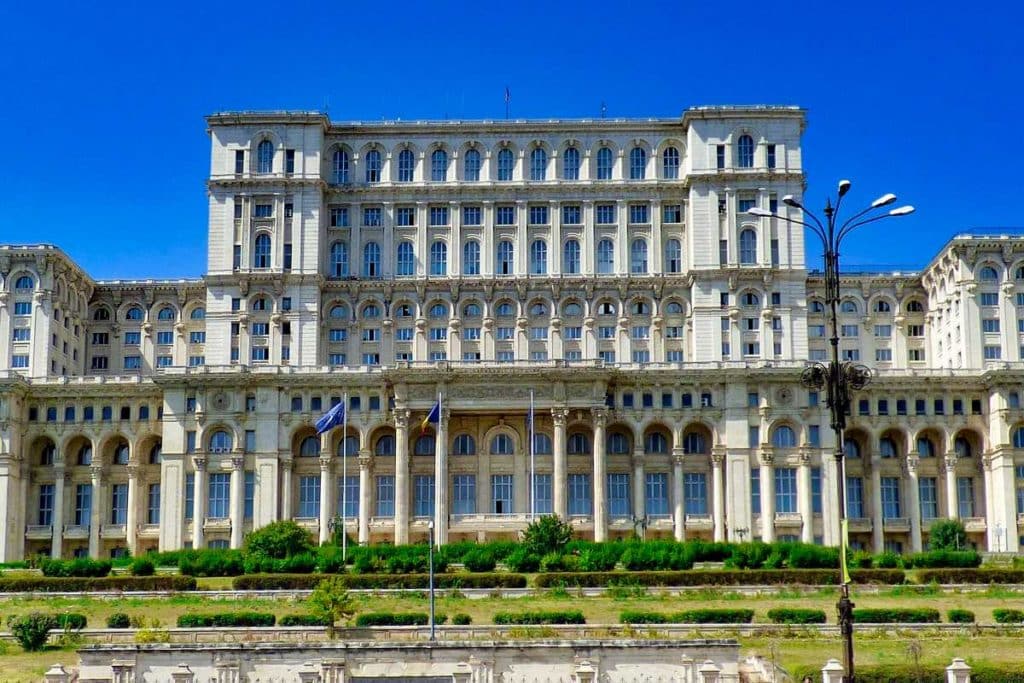
Palace of the Parliament
The neoclassical Palace of the Parliament marks the end of Bulevardul Unirii and can confidently be called one of the most spectacular buildings in the world. Originally known as the House of the People (Casa Poporului), there is hardly a superlative that the Palace of Parliament would not fulfill. 20,000 construction workers were involved in the building’s construction in three shifts, and yet it took six years before it could be inaugurated in 1989. With a built-up area of 365,000 m², the Palace of Parliament is the second largest administrative building in the world after the Pentagon.
There are only estimates of the exact costs of this insane project. However, it can be assumed that almost half of Romania’s gross national product at the time was spent on the construction. Alone 1,000,000 m³ of marble from Transylvania were processed for the construction. After the fall of communism, the Romanian Chamber of Deputies moved into the building, and the Senate and the National Art Museum are now also based here. Today you can visit a part of the more than 5000 rooms and get an impression of the monster.
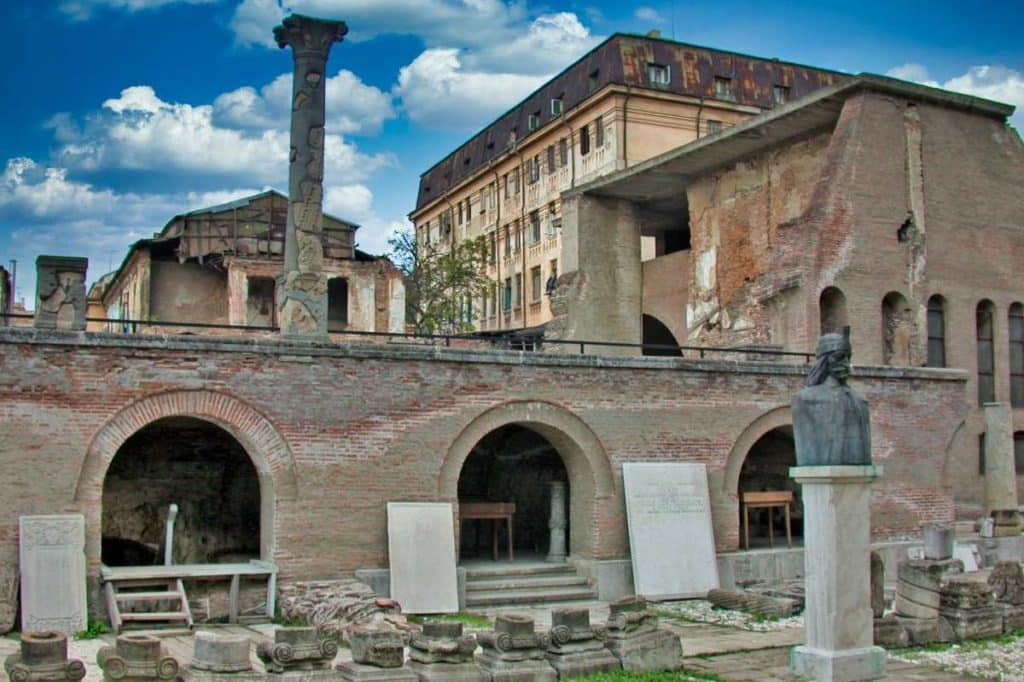
Old Prince’s Court
Count Dracula is legendary, but by now it should be common knowledge that he was not a vampire, but a worldly, albeit very cruel, ruler. He ruled over Wallachia for a time and had a palace built here in today’s center of Bucharest, which today bears the name Curtea Veche (Old Prince’s Court). There is hardly anything left of the original palace, as it was repeatedly remodeled and destroyed. However, the church of the same name, the oldest preserved building in Bucharest, still stands on the site of the Old Prince’s Court. It was here that the princes of Wallachia were crowned and some frescoes have been preserved. On the grounds of the Prince’s Court you can also discover many remains from the various construction phases.
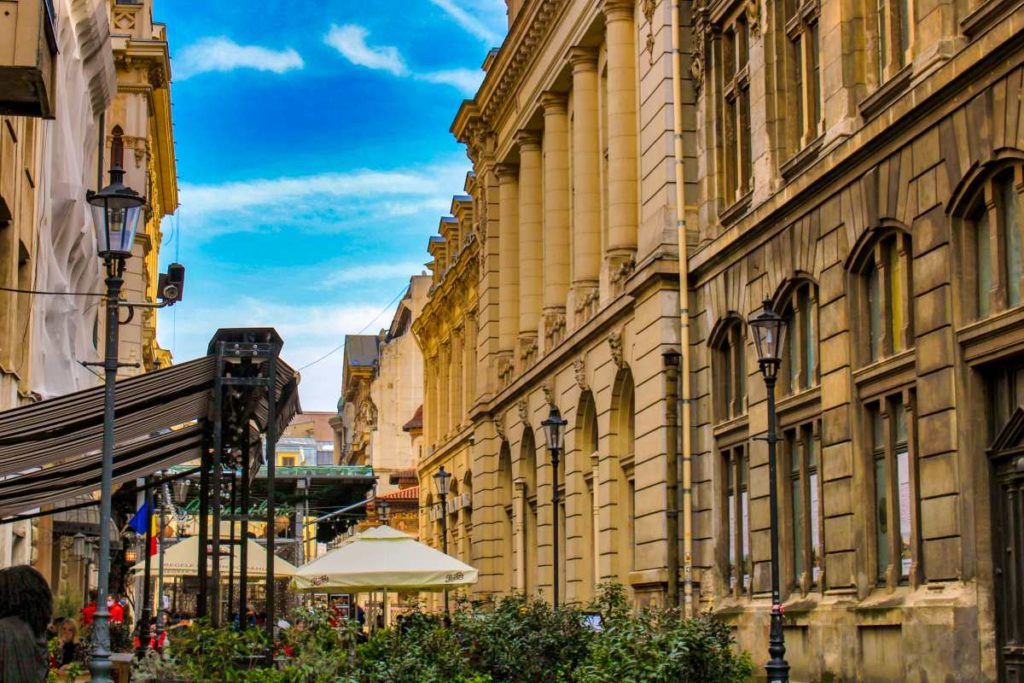
Lipscani
On a hill in the heart of the city there is a small rectangular quarter called Lipscani. Its name comes from the city of Leipzig, as merchants from Leipzig used to sell their goods here. Formerly known as the neighborhood of merchants and craftsmen (many streets still bear the names of guilds), Lipscani is now Bucharest’s most popular nightlife district. Here you will find many owner-operated stores, beautiful cafes and quaint restaurants. One of the most beautiful places in the district is Pasajul Macca-Villacrosse, an arcaded street with many international restaurants.
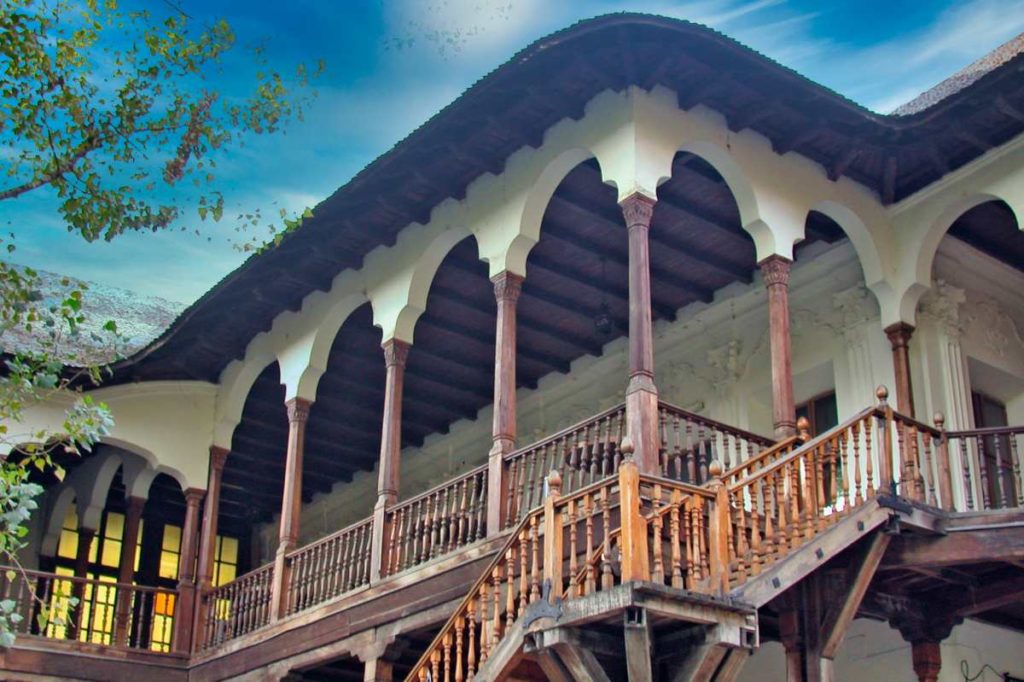
Old Caravanserai
The Old Caravanserai, the Hanul Manuc, ranks somewhere between hostel, bazaar, dormitory and fortress. The complex dates back to the busy diplomat, merchant and speculator Manuc Bey and is a feast for the eyes. In its present form, however, it is a reconstruction carried out in the late 1960s. Characteristic of the complex, which had dozens of guest rooms and several stores, are its wooden balconies in the courtyard. Today you can walk around the complex, stay at Manuc’s Inn or have a meal at the restaurant.
Calea Victoriei
The “Victory Street” runs for several kilometers from north to south in the center of Bucharest. It is one of the oldest streets in the city and has existed since the 17th century. In the course of time it became the most important axis of the city and numerous noblemen had their domiciles here. A walk along the street is like an architectural journey through time and some of our Bucharest sights listed here are located on Calea Victoriei or in its immediate vicinity.
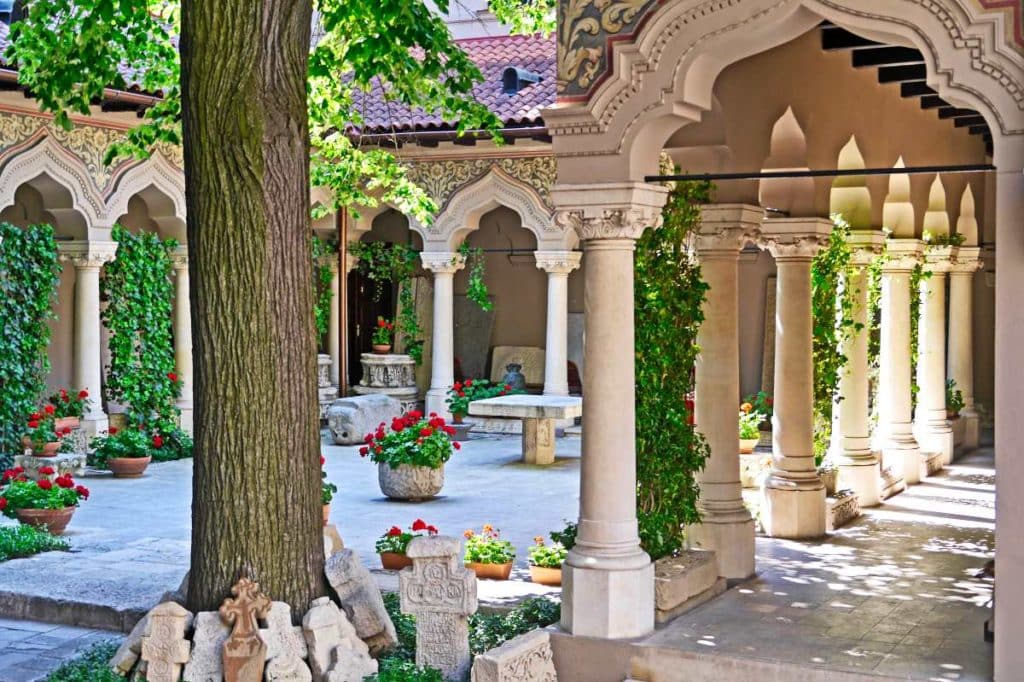
Stavropoleos Monastery
One of the most beautiful places in the Romanian capital is the Stavropoleos Monastery on Calea Victoriei. Initially, there was also a caravanserai here, which was later extended by a monastery and a church. The complex was built in the so-called Brâncoveanu style, which goes back to Constantin Brâncoveanu, a prince of Wallachia. Characteristic of this style of the late 17th and early 18th centuries are its oriental and Italian influences. Of the original complex, only the church remains, to which some buildings worth seeing were added at the beginning of the 20th century.
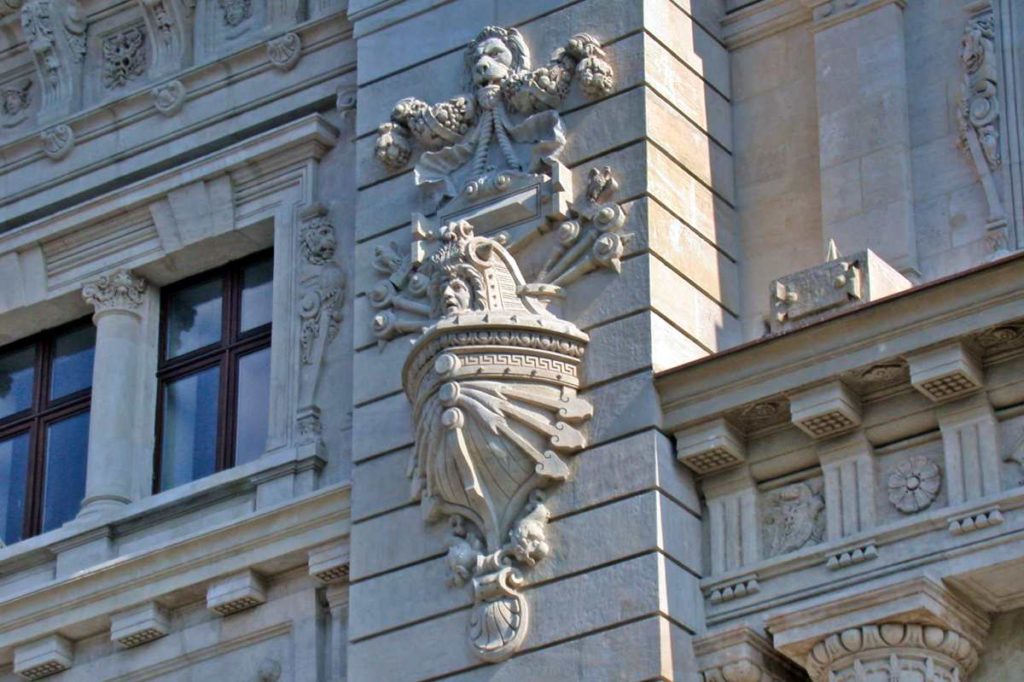
History Museum
The Muzeul Național de Istorie a României is also located on Calea Victoriei and the building itself is an absolute eye-catcher. Housed in the former palace of the post office, exhibitions can be found in over 60 rooms. Here you can admire not only coronation regalia of Romanian rulers, but also antique jewelry, costumes, watches and a plaster cast of Trajan’s Column. You should definitely take two to three hours for the visit, because no two rooms are alike and there is something to discover everywhere. Stamp fans take note: The Philately Museum is also housed in the Palace of the Post, so you can visit two museums at once.
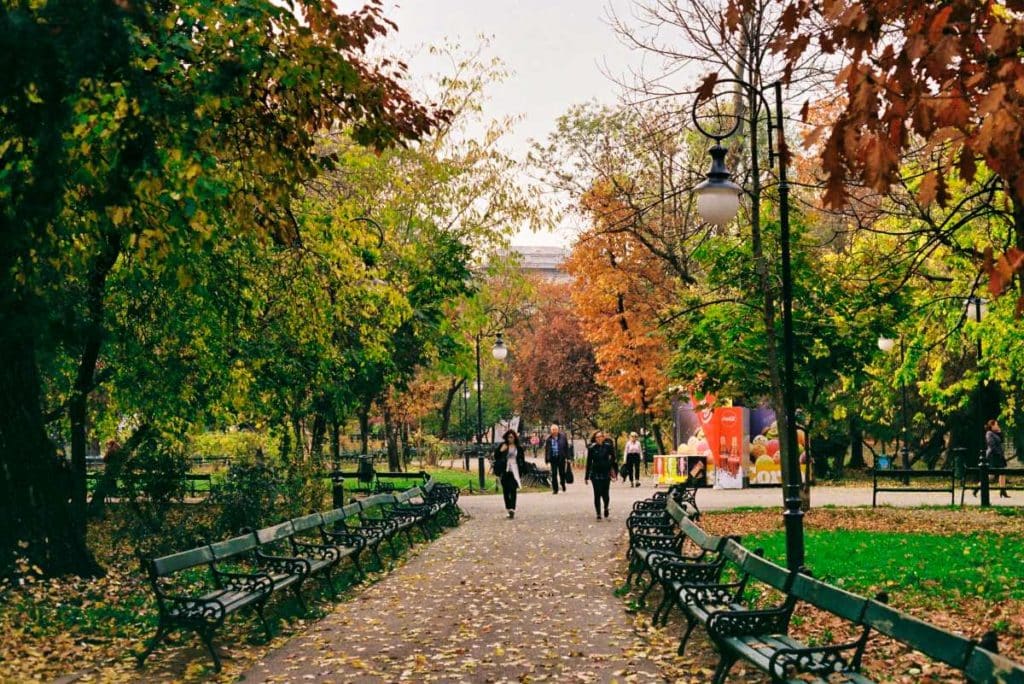
Cişmigiu Park
Cişmigiu Park, with its huge area of 17 hectares, is the green lung of the city, next to Parcul Regele Mihai I al României, and during my last visit to Bucharest I was lucky enough to stay right in its neighborhood. It was laid out as early as the 18th century, making it the oldest green space in the city. Here you can walk and relax for hours and enjoy the many marble statues, a mini-zoo and the large lake, over which you can also sail by boat.
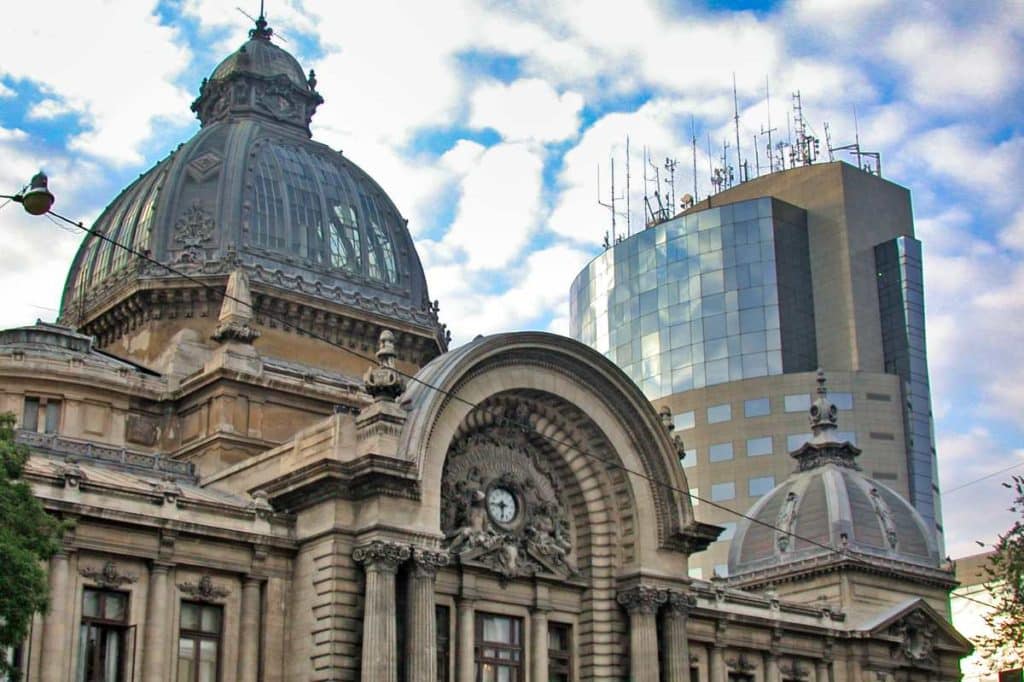
CEC Bank
The state-owned CEC Bank was founded in the 1860s and today maintains the densest branch network in the country. Just a few years later, it was decided to establish a savings bank, which was given a chic main building in the heart of the capital. In the presence of King Charles I, the foundation stone of the Palatul CEC was laid on the site of an old monastery. The work was entrusted to Paul Gottereau, who created other buildings in Bucharest. You can enter the building today and you will surely be fascinated by the main hall, which looks like a cathedral of finance and impresses with its light-flooded glass domes.
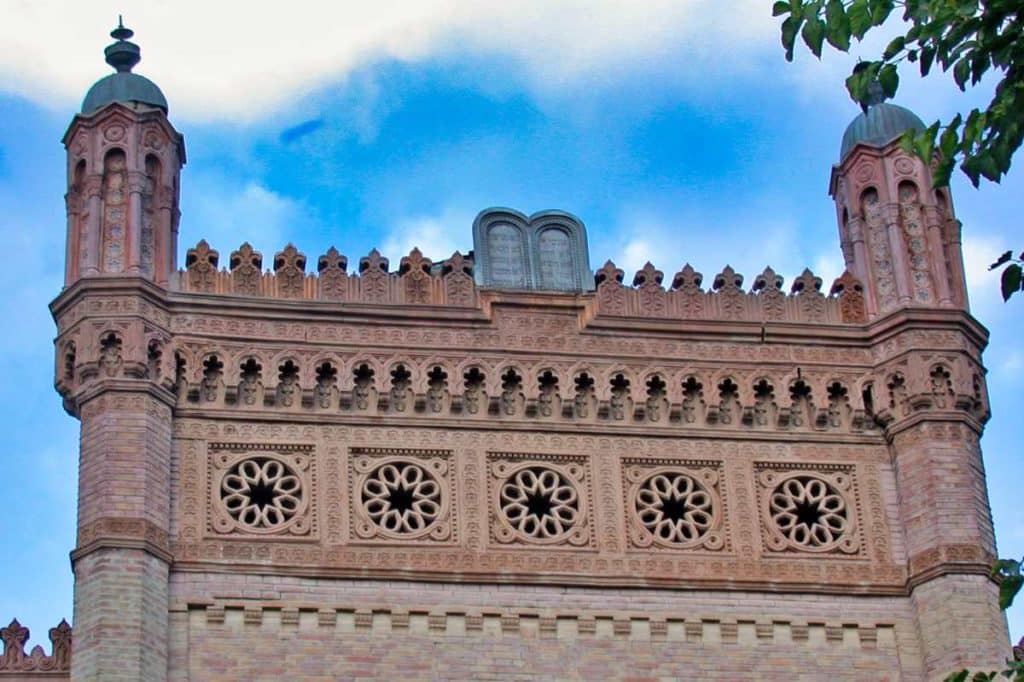
Templul Coral
Once there was a large Jewish community in Bucharest. Many of its members were unfortunately killed, many synagogues and other Jewish institutions were destroyed. They shared this fate with the Templul Coral (“Choral Temple”), which, however, was repaired immediately after the war. It is the largest Jewish place of worship in the country and can accommodate over 600 believers. The building, which is well worth seeing, was built in the mid-19th century in the Oriental style, with the architects taking their cue from the Leopoldstäter Temple in Vienna.
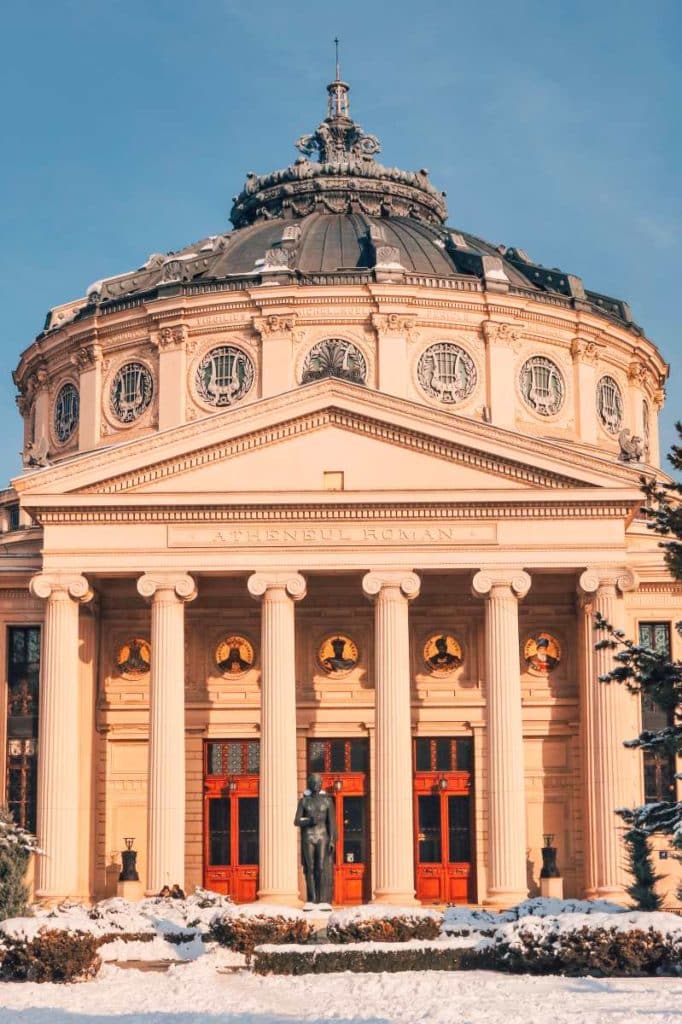
Athenaeum
It is not easy to choose the most beautiful Bucharest sight, but the Athenaeum would certainly have the best chances to land on one of the top places. French architect Albert Galleron created a timelessly elegant masterpiece here, where the Romanian parliament used to meet as well. Doric and Ionic columns, a huge dome and portraits of famous Romanian rulers in the form of golden mosaics are the main features of the Athenaeum. It is now home to the State Philharmonic Orchestra, which uses the 800-seat Great Hall with its magnificent frescoes depicting Romanian history from Roman times onward. Tip: Buy a ticket for the Philharmonic here, then you can also admire the Great Hall from the inside.
National Museum of Art
The Muzeul Național de Artă al României is housed in the former Romanian royal palace and that alone shows what an important collection it is. The building has an eventful past, because not only the Romanian king had his residence here, but also Ceaușescu. He wanted to address his people from a balcony of the building in 1989, but they were so angry that he had to flee. Shortly thereafter, he was captured and executed.
In the museum, of course, things are quite peaceful today. Here you can admire not only the most important collection of Romanian art, but also many international gems. Among others, you can find works by Rubens, von Eyck, Rembrandt and Monet. But Romanian sacred art is also worthy of attention, many of the pieces come from monasteries that Ceaușescu had destroyed.
Cotroceni
Cotroceni is the name of a Bucharest district, but also of a castle. It was built in the 17th century and later remodeled by Paul Gottereau, who was also responsible for the CEC Bank. The royal residence now houses a museum and is also inhabited by the Romanian president. A church once stood on the site, which was demolished by Ceaușescu, who also resided here. Only a few years ago, the place of worship was rebuilt with the support of the president and the patriarch.
Bellu Cemetery
Actually, the largest cemetery of the city is called Cimitirul Șerban Vodă, but most people know it only under the name Cimitrul Bellu. It has been used since the middle of the 19th century and is the burial place of the most important Romanians of the modern era. It is not known exactly how many people found their final resting place on the more than 30 hectares large area, but the number of notable deceased is enormous. Representation is the trump card here and during a walk through the area you will come across numerous magnificent mausoleums, tombstones and sculptures.
Interesting: Although the cemetery is considered fully booked, many a rich Bucharest resident would still like to be buried here and finds ways and means to lend weight to his wish. Due to the black market trade for the most coveted grave plots, a Romanian newspaper wrote a few years ago that the Bellu cemetery was the place in the capital with the highest plot prices.
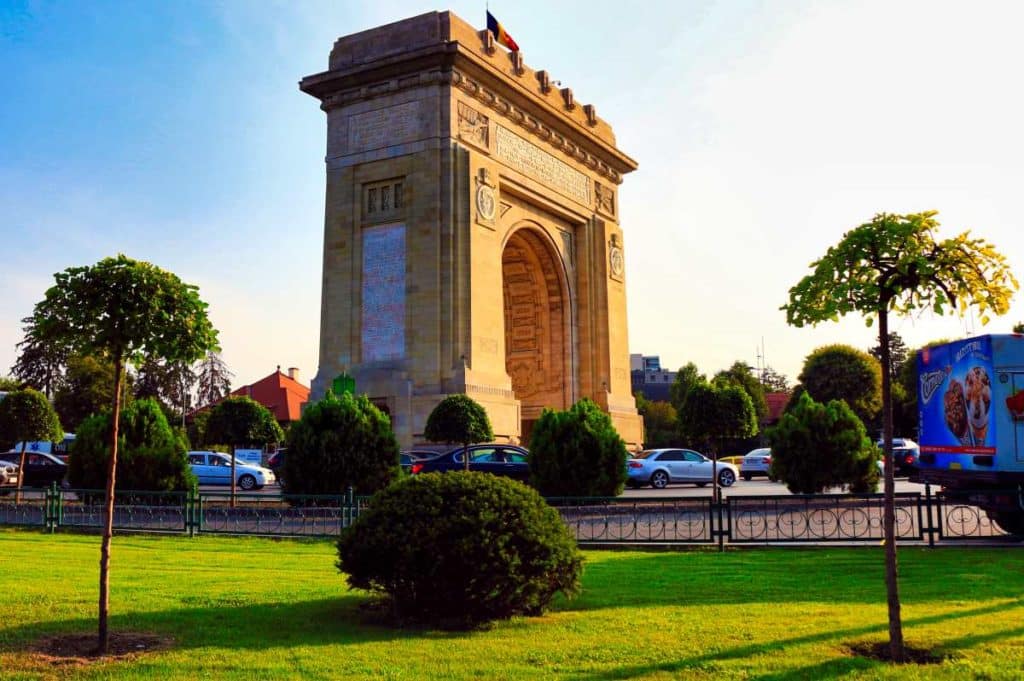
Arch of Triumph
Along with the Athenaeum and the Palace of Parliament, the Arch of Triumph in the north of the city is the third landmark of Bucharest. Just like its Parisian model, the Romanian Arc de Triomphe symbolizes the pride of the nation. It was built in the 1930s in the Roman style, after two wooden predecessors were not really representative. The triumphal arch, decorated with beautiful relief work, commemorates the victory in the First World War, in which Romania fought with little success on the side of the Entente powers, but ultimately benefited from the defeat of the Central Powers.

Parcul Regele Mihai I al României
Besides Cişmigiu Park, Bucharest has another green space that is well worth seeing. It adjoins the Arch of Triumph and was known as Parcul Herăstrău until 2017, but now bears the name of King Michael I. The inauguration took place at the same time as that of the Arch of Triumph. Here, too, you can take a boat across a large lake, and the park is characterized by its wide avenues. There is also a Japanese garden, a rose island and a garden show once a year.
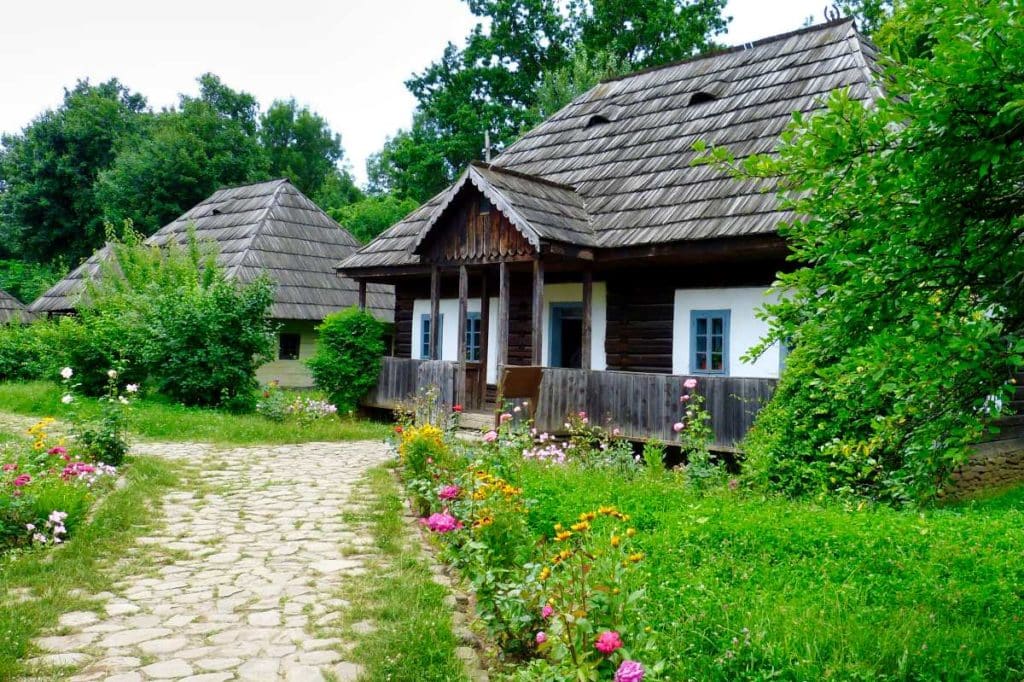
Open-Air Museum
The opening of the open-air museum at the edge of the park also took place in the presence of the king in the 1930s. It was intended to show the importance of rural life for the Romanian state, and even today you can get an impression of traditional rural life in Romania here. Many of the houses were dismantled in their original location and then brought piece by piece to the Romanian capital, with the oldest building dating back to the 17th century. Because the houses and churches come from all parts of Romania, you will also notice that rural life used to be very different from region to region and that each region had its own architectural style.
Practical tips
You want to travel to Romania and see the beautiful sights of Bucharest? Then you first need a roof over your head and you are certainly hungry. The following tips should help you in your search.
Accommodation
- K+K Hotel Elisabeth*. Elegant hotel with very reasonable prices for the upscale facilities offered.
- Rembrandt Hotel*. Smartly designed rooms with a view of the old town and good breakfast.
- Hotel Herastrau*. The Herastrau is located on the lake in the Parcul Regele Mihai I al României. So if you don’t want to stay right in the bustling center, it’s a good choice.
Restaurants
- Old Caravanserai. At Hanul Manuc you can enjoy Romanian classics in a historical ambience and relax in a kind of beer garden in the courtyard in summer.
- Caru’cu bere. The popular pub offers good Romanian beer and delicious hearty cuisine in a cozy atmosphere.
- La Mama.Chain present in the city with several restaurants, where you can try Romanian dishes.
Things to do in Bucharest book tips
This classic tour guide presents Romania and neighbouring Bulgaria in all its variety.
This well written books tells you everything you need to know about Romania’s troubled history.
- Birgitta Gabriela Hannover Moser (Author)
Who was the real Count Dracula? This book tells you what he was really like!
How did you like our article about the most beautiful things to do in Bucharest and the most beautiful Bucharest sights? Let us know and leave a comment!

